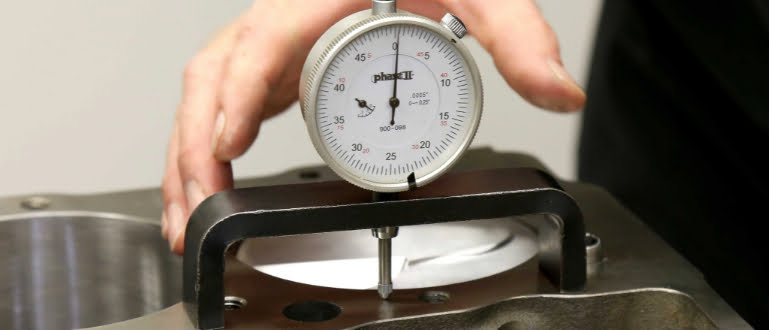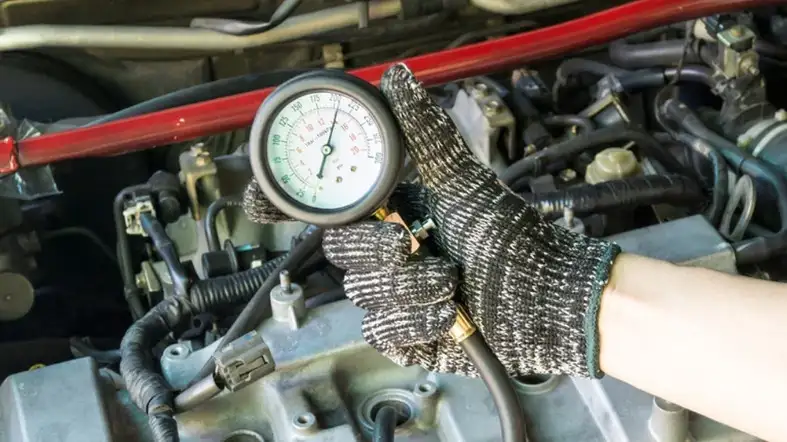Knowing the engine ratio is a brilliant way to tune the vehicle to get the most horsepower out of it.
Since disassembling the engine is tiresome and time-consuming, calculating the compression ratio with an assembled engine is highly beneficial.
However, you must learn how to determine compression ratio without disassembling the engine in the right way to prevent messing up.
In the following, we have discussed two different ways to calculate the compression ratio of an engine while keeping the engine assembled to save both time and energy.
How To Determine Compression Ratio Without Disassembling The Engine
You can determine the compression ratio either using a manometer or by relying on an educated guess.
Between them, the first one will deliver a more accurate result, but it will require the aid of other people. The second method will require lots of guessing rather than hard work.

Method1: Using a manometer
This method will let you check the compression ratio of the vehicle through the spark plug sockets. And it’s a time-saving method, as don’t require disassembling the engine. However, you will require some help from your friend.
Essentials are required:
- Spark plug wrench
- Manometer
- Work gloves
- Warm up the engine
Run the engine for a while until the engine gets to its normal heat. The reason is that a cold engine won’t give you an exact reading.
Take out the spark plugs

Turn the ignition off and disconnect one spark plug from the cable that remains connected to its distributor.
Then unscrew the disconnected spark plug. Disconnecting the spark plug will also help you clean it if it gets dirty.
Insert the manometer
Put the manometer’s nozzle into the hole where the spark plug needs to be fixed. Remember, you must fit the nozzle into the chamber completely.
Test the cylinder
Hold the manometer with your hand and ask your friend to turn on the engine and accelerate the vehicle for 5 seconds. This should be enough time for you to get an accurate reading.
After getting the reading, power off the engine and remove the nozzle of the manometer.
Then reattach the spark plug into its original position with proper torque following the user manual. Following the same method, test every cylinder.
Perform a pressure check

All the cylinders should have the same amount of pressure and match the number mentioned in the user manual.
Calculate the PSI to compression ratio
Finally, determine the PSI to compression ratio. For example, if the compression ratio is expected to be 10:1 and you get a manometer reading of 16, the PSI should be 15×10/1= 150.
Method 2: guessing
It’s quite hard to determine the compression ratio of an unknown engine, especially without disassembling it.
However, you can solve this difficult job by making an informed guess based on the size and head of the engine.
Algebraically, the compression ratio is
CR = (V + CV)/CV
Here,
V= displacement of one cylinder.
CV = clearance volume.
The clearance volume is the summation of:
- The volume of the head gasket
- Combustion chamber volume
- Volume because of deck clearance
- Volume from the piston deck down to the first ring
- and +/- piston dome.
You have to measure each of these on your partially assembled engine.
If you have a running engine, estimate the clearance volume according to the measurement you know and start guessing from there.
FAQs
Is The Compression Ratio The Same As The Pressure Ratio?
Compression ratio and pressure ratio are considered the same terms in the vocabulary.
In aeronautics, the overall compression ratio or overall pressure ratio is a ratio that stands for the stagnation pressure that arises at the compressor in the rear of the vehicle’s engine.
How Do You Know What The Compressor Ratio Is In The Vehicle?
You can determine the compressor following this term:
Divide the amount of water required to fill up the cylinder keeping the piston at the top dead center by the amount of water needed to fill up the cylinder keeping the piston at the bottom dead center. The compression ratio is the amount between two different volumes.
Final words
Determining the compression ratio of a vehicle’s engine is essential to building a new engine or to know the efficiency of a car using fuel.
But disassembling an engine from a vehicle is a tedious and lengthy task.
The other factors that make the compression ratio calculating more challenging are making exact measurements, accurate tools, and triple checking the work.
However, you can skip these troubles simply by learning how to determine compression ratio without disassembling the engine.
Lastly, apply the first process if you don’t want to determine the compression ratio based on the guesswork.
